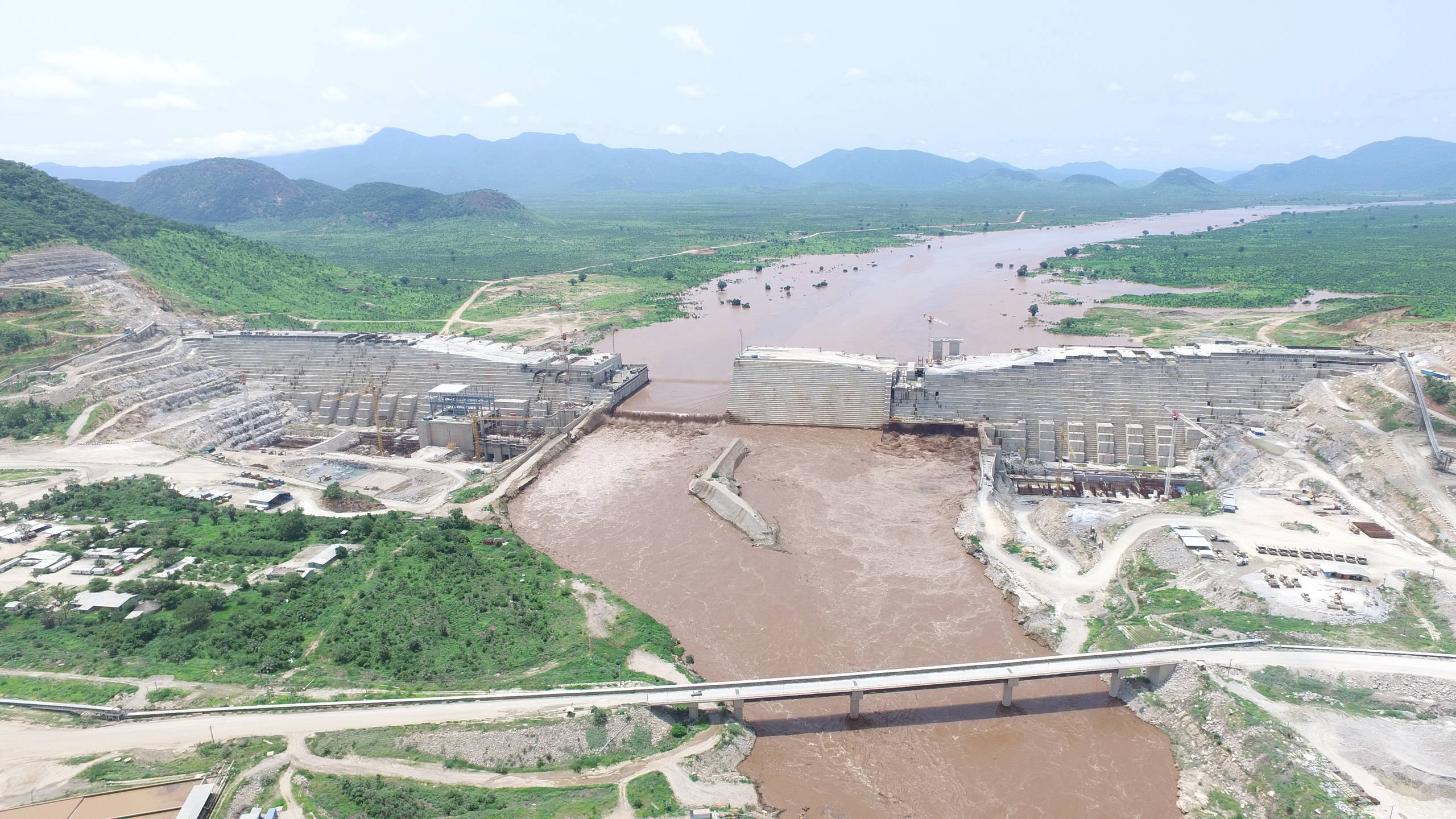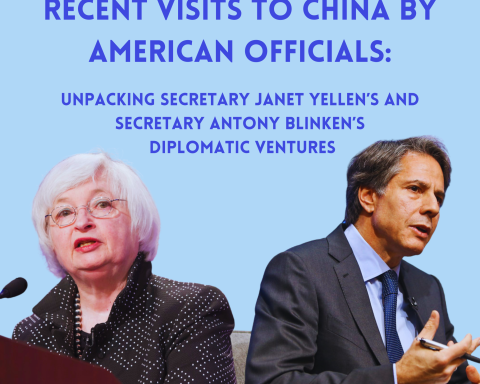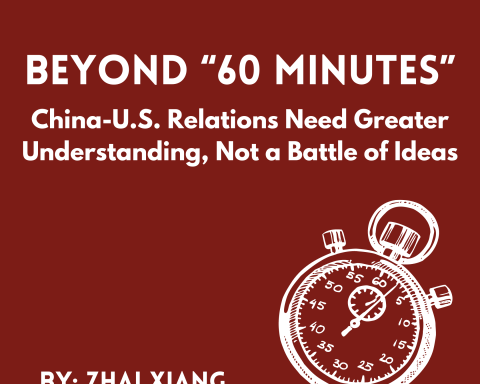An update to this piece was published on June 5, 2021.
Ethiopia is currently in the process of completing the largest infrastructure project in the country’s history, the Grand Ethiopian Renaissance Dam. With 70% of the construction for the dam completed, Ethiopia’s leaders have heralded it as serving two critical goals. The dam serves as both an emblem of Ethiopia’s development as well as a practical means to provide clean energy to its citizens, 65% of which currently are not connected to the energy grid.
While Ethiopia’s efforts to invest in hydropower as a means of development should be applauded, the dam project has severely soured relations with Ethiopia’s upstream neighbour, Egypt. Since 2011, while Egypt was reeling from the Arab Spring, Cairo has argued that the dam presents a fundamental threat to its energy and water security. Egypt relies on the Nile for 90% of its water needs, and the government has already taken steps to limit rice farming on the Nile in order to protect water supplies for its rapidly growing population—growing at 2.5% annually and projected to reach 145 million people by 2030.
Indeed, Egypt’s President al-Sisi stressed how urgent of a priority the country’s water security on the Nile is at a UN conference last September, stressing that “the Nile is a question of life, a matter of existence to Egypt”. Ethiopia’s Grand Renaissance Dam, therefore, represents a significant threat to its future prosperity.
Yet for Ethiopia, the Nile and projects such as the Grand Ethiopian Renaissance Dam go to the heart of its aspirations as a rising African power. It not only represents a chance to develop the country’s energy network—and indeed to sell excess energy to its neighbours—but it also is a vital part of Prime Minister Abiy Ahmed’s ‘Medemer’ [‘Coming Together’] political doctrine. Ethiopia has taken the unusual step of mostly self-financing the dam instead of seeking loans from international institutions or foreign lenders. It has sought to meet much of the $4.5 billion cost mostly through the sale of bonds, which it has sold to citizens both at home and abroad. For example, a recent report by the Brookings Institute stated that there is some pressure on public sector employees to buy the bonds. Despite the high cost of the bonds, many government employees have nonetheless purchased them “primarily because of pressure from the government, and the belief that participation in this national project is a show of one’s patriotism.”
With 70% of the dam completed, the central issue of contention hinges on the rate at which the dam basin will be filled, rather than whether to complete the construction of the dam. Ethiopia has stated that it aims to start filling the basin this July, while it is estimated it could take up to 7 years to fill to capacity. Egypt is calling for Ethiopia to fill the basin at a slower rate in order to protect the flow of water downstream to its territory, and to prevent further pressure on its already strained water resources. The rate and extent to which Egypt will lose farmland is directly proportional to how quickly Ethiopia decides to fill the dam’s basin.
In an attempt to reach an agreement, last October Egypt called on the United States to broker talks between itself, Sudan and Ethiopia. While these talks are ongoing in Washington DC, it was announced on February 26th that Ethiopia would skip this week’s round of talks—the third in the process—as it was still consulting with relevant parties in Ethiopia on its position. Indeed, while there was hope that a deal could be reached as early as this February, these expectations waned after US Secretary of State Mike Pompeo stated during a visit to Ethiopia last month that “a great deal of work remains”.
Chinese Support
Given this critical stage and tense atmosphere of the project—and the careful diplomatic threads involved in the negotiations over the Nile flow—where does China stand on the issue? China is currently heavily invested in Ethiopia, with loan data from the China Africa Research Initiative (CARI) at Johns Hopkins University detailing that Ethiopia received $652m in loans from China in 2017 alone. While China is not directly funding the dam’s construction costs, Chinese companies have been brought in for much of the construction work—drawing on Chinese expertise in the hydroelectric sector. For example, it was recently reported that Chinese companies were awarded contracts earlier this month to “pick up the pace” on the project, with contracts worth $40.1 million and $112 million awarded to China Gezhouba Group and Voith Hydro Shanghai respectively.
Moreover, while China has not been directly involved in lending for the construction costs of the dam itself, it has provided significant financing for the related power lines and infrastructure which will eventually transport the electricity to neighbouring towns and cities. For example, in 2013 China, loaned Ethiopia $1.2bn to build power transmission lines to connect the dam to major towns and cities. Furthermore, in April last year, China further announced an investment of $1.8 billion to expand Ethiopia’s power grid following Prime Minister Abiy Ahmed’s visit to Beijing.
While China has so far avoided being drawn into the dispute between Egypt and Ethiopia and is playing no official role in the US-led talks, it remains to be seen how much longer China can distance itself from the dispute. As a major construction partner for the dam as well as a significant source of investment in the Egyptian economy, Chinese interests are closely intertwined with the project’s successful and timely completion as well as maintaining its economic and political relations with both Ethiopia and Egypt.
The project’s success will be an important marker for future Chinese investment in Africa’s energy infrastructure—especially in the hydropower sector. China is actively involved in other hydropower projects in Africa, such as the Mambila hydroelectric project—slated to be Nigeria’s largest power plant upon completion—and is being built by a consortium of Chinese companies. Indeed, the NGO International Rivershas compiled data indicating that China is “fuelling the dam boom in Africa” through their involvement in financing or construction of dams in 22 African countries. With such a significant hydropower presence, China will need to tread carefully.
While there currently appears to have been little direct criticism of China’s involvement of the Grand Ethiopian Renaissance Dam, it is difficult to believe that China is impartial on the issue. With such a significant number of contracts awarded to State Owned Enterprises such as Gezhouba Group, China can play a pivotal role in the conflict. If China chooses to turn a blind eye, citing its non-interventionist principles it may risk souring relations with both Addis Ababa and Cairo, which are both important investment partners.
Indeed, there have previously been high profile protests regarding Chinese financial and logistical backing for dam projects in Africa. For example, in 2011 activists protested outside the Chinese embassy in Nairobi against Chinese financial backing of the Gibe 3 damn, which they fear will harm Kenya’s Turkhana Lake. There have also been reports that Chinese built dam projects are significantly failing to meet basic environmental standards, following the publication of a study by International Rivers last year which found that companies “routinely compromise social and environmental objectives and disregard their stated policies to keep to schedule and on budget”. Moreover, closer to home in Asia, China’s refusal to address environmental concerns while building the Myitsone Dam in Myanmar has resulted in a huge loss of investment after the Myanmar government shut down the project.
With these concerns in mind, perhaps it is time for China to look closer at the countries in which Chinese companies are operating, and where China is investing. With such close and significant levels of Chinese cooperation on infrastructure projects China has a responsibility to ensure that its activities do not acerbate the potential for conflict among upstream and downstream countries. It should also seek to safeguard its relationship with all of its African partners while encouraging sustainable development of hydropower. If China is fuelling the hydropower boom, it must ultimately take some responsibility for the potential political fallout.
Article by Iain Millar, China Program Spring 2020 Intern.




